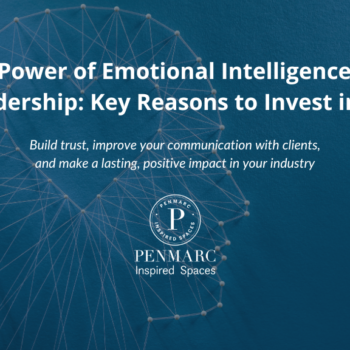This month for Leadership Live, our topic will be “Fact vs. Feelings: Leading with Emotional Intelligence.” But why is it important to differentiate between facts and feelings when implementing emotional intelligence into leadership? Let’s start by defining what emotional intelligence is.
Emotional intelligence, in its most basic form, is about understanding and managing your emotions. Once you can control your emotions, you can focus on understanding others’ feelings and empathy. Then, the final step of emotional intelligence is taking what you learned from the first two steps and using it to build and manage your workplace relationships. These steps are all interconnected and essential for effective leadership.

Leading with Emotional Intelligence should begin with the facts. Facts are unbiased and based on experience, observation, and proof. Removing emotions from the equation — including your own, coworkers’, and clients’ — will help everybody understand what is happening within the organization. Then, once the facts are in place, we can track back to why people feel the way they do or how they got here.
Countless circumstances can influence people’s emotions and what they bring to a situation — education, personal background, and life experiences, to name a few.
Building trust and transparency with your team is the only way to learn these things about them. The only way they can start to feel comfortable enough with you is to be vulnerable and honest.
We all want to work with and for people who treat us respectfully, care about what we have going on in our personal lives, and help contribute to a pleasant workplace environment. All of that begins and ends with emotional intelligence.
Tips for improving your emotional intelligence
When enhancing your emotional intelligence, active listening is one of the most crucial components of this process. Practicing active listening without judging your peers allows them to express themselves freely. Prioritizing an understanding of others before making yourself heard will foster mutual respect.
But active listening is the first step to establishing personal connections with those around you. Be willing to embrace vulnerability amongst your peers, as it can lead to deeper and more meaningful relationships built on trust.
Once that trust is in place, try to discover the underlying motivations behind your emotions and those of others. Doing this helps you gain insight into the behaviors and reactions of your team and allows the entire organization to remain on the same page.
And finally, ensuring that clear and effective communication regularly occurs throughout the team is key. Emphasizing clear communication will help accurately convey thoughts and feelings, removing any chance of misunderstandings.

By implementing these strategies, you will develop and enhance your emotional intelligence to create a more fulfilling and productive workplace for yourself and your peers.
Benefits of leading with emotional intelligence

Leading with emotional intelligence offers a wide range of advantages. For one, it will reduce turnover by fostering a deeper understanding of team members’ and clients’ needs and motivations, increasing job satisfaction and loyalty.
When implemented correctly, emotional intelligence also helps inspire your team, driving motivation and productivity. This will, in turn, lead to better teamwork by promoting open communication, conflict resolution, and building strong, cohesive relationships among team members.
Lastly, emotional intelligence creates a healthy working environment where trust, respect, and empathy thrive, improving employee well-being and overall organizational success.
Emotional intelligence is a lifelong skill requiring continuous awareness and effort, but still, the impact it can have on yourself, your team, and your organization, makes it an invaluable journey worth undertaking.
To learn more about Penmarc Inspired Spaces and what we’re all about, click the link below!


